What if food were the focus of the school curriculum?
Dr Christian Nansen reimagines the school curriculum and places food at the centre of all subjects, from chemistry to history and maths
Imagine an entire school curriculum rooted in a single denominator: food. Biology, ecology and environmental science being taught based on projects related to the growth of plants and animals. Literature, history, sociology and humanities focusing on the importance of food and concepts, like ‘breaking bread’, feasts and banquets. Just think of how explorations by Vikings, Columbus, Marco Polo, etc. were largely driven by trade in spices, tea, sugar, coffee, silk and cotton.
What I am proposing here is already being done, in part, as individual initiatives and projects. For example, many schools have a butterfly garden, biology labs keep colonies of insects, students grow some vegetables and have a few livestock animals. In some schools, students learn how to eat and cook healthy food. But I am proposing a full commitment to ‘food’ as the underlying driver of an educational curriculum. And I am arguing that such a focus on food would strengthen, not weaken, the academic rigour that could be delivered to students of all age groups. That is, ‘food’ as an educational denominator can be taught and approached with multiple goals in mind, and these would be similar to the current distinctions between practical and more theoretical classes.
With the best of intentions, middle and high school curricula seek to provide students with essential skill sets regarding problem solving, critical thinking and basic knowledge. It is undeniably important to acquire basic mathematical skills, understand the fundamentals of genetics and biology, memorise and study principles of physics and chemistry, have a basic understanding of main historic events and of civilisations through time, appreciate and understand classic literature, and understand sociological drivers and their role throughout history. In a world with rapid growth in the adoption of technologies, students also need to learn about computer programming and robotics. I agree that all of these topics must be part of school curricula. I would argue, however, that they can all be taught very effectively through an underlying emphasis on food.
Students of all ages can grow crop plants in small pots inside a classroom, or outside, in small plots (such as a roof garden) and study growth as a function of time and growing conditions. Concepts of ‘abiotic’ (i.e. temperature, humidity, wind, sunlight, soil pH, ‘micro-nutrients’ and ‘macro-nutrients’) and ‘biotic’ (pests, pollinators, microbial symbionts) variables can be introduced to explain specific crop growth patterns and plants’ basic physiology. Through lectures about basic soil characteristics, the students can learn about pH levels, the physical properties of minerals, and about ecosystem services by soil microbial organisms. The importance of water could be another sub-topic – the basic functions of water in the growth of living organisms. Practical tasks associated with this discipline could be to design/ develop a crop production system and calculate: 1) the number of plants per area (how many seeds or transplants are needed based on row and plant spacing); 2) irrigation and fertiliser requirements; and 3) yield (both amount and value).
More advanced practical tasks could involve: 1) development of irrigation systems (potentially automated and programmed using raspberry pie computing); 2) use of sensors (i.e. soil moisture sensors and/or weather stations to monitor growing conditions and later describe/explain crop yields.
Agricultural plants (and animals) are direct results of selective breeding. Basic genetics could be explained through a series of classes on how humans produce cabbage, broccoli, cauliflower, kale, Brussels sprouts, etc. from wild mustard plants. Such classes could start with the observations from Darwin, Mendel and others, or they could introduce crop breeding programmes from ancient Mesopotamia. These subjects would be the building blocks for basic concepts in genetics and molecular biology. Fundamentals in cell biology could be observed through plant cells, enabling students to make important connections between cell organelles, plant physiology and crop development.
Each school could carefully examine its own potential for having solar panels to produce energy, install rainwater catchment systems and water recycling methods, and identify sources of organic material for composting (crop fertiliser) from within the school and/or nearby shops, factories, etc. Engineering, computer science and technology would be taught as projects that focus on how to quantify, develop quality control, and use energy, water and nutrients in on-school crop production. At a more advanced level, it would be possible to integrate robotics and machine learning systems into the curriculum. If food production is not feasible on the school premises, then students could develop virtual computer programmes and simulate real-food productions.
CHEMISTRY
Cooking is nothing more and nothing less than applied chemistry. How does the pickling of vegetables work? What is happening when cream is whipped? What happens to food during heating and/or frying? Salting olives, fish and other types of meat has been practised for thousands of years – how does this means of preserving food actually work?
Imagine teaching students about chemical reactions and chemical bonds, pH levels and other basic chemistry concepts through a combination of theory and eating food! Students would surely walk away with a profound appreciation for food and hands-on cooking experience. Indeed, learning about organic chemistry, food preservation and cooking would also address nutrition and the importance of healthy eating.
HUMAN HISTORY
Around 1845, the migration by people in northern Europe to North America was largely due to famine, which was caused by a devastating disease in potatoes. History and social sciences could be taught on the basis of the importance of food through time and among cultures.
What did the Mayas eat and why? How did trade routes and commerce (coffee, sugar, spices and silk) affect societies and civilisations? It would be incomplete to discuss the history of the southern US states and slavery without taking a careful look at the commercial role and industries derived from sugar and cotton plantations.
Food is mentioned in literature in myriad ways. It is a part of rituals and traditions that define our cultural values. In all societies and cultures, large banquets and feasts play roles in celebrating major events of celebration. They invoke a sense of victory and power; they enforce images of superiority, but they are also unifying and crucial in diplomacy and reconciliation. In paintings and poetry, symbolism based on food items is common. Just as one can study an individual genre of art, I would argue that, for instance, one can compare how Renaissance painters and Andy Warhol used food items in their paintings.
SOCIAL STUDIES
Concerns about food security are linked to the effects of climate change and to international crises. More specifically, climate change and water scarcity, and therefore food security, are factors underpinning conflicts in the Middle East and elsewhere. Thus, long-term solutions to these crises cannot be conceptualised unless they include considerations related to sustainable food production.
Another topic to address is urban farming and ‘edible cities’. It is the traditional notion that rural and urban developments are in direct conflict with one another, as the growth of cities take up farmland and water resources. But urban farming and edible cities are about the partial integration of the two, about creating urban environments with high degrees of recycling of resources (water and nutrients) and urban citizens producing some fraction of their food consumption.
MATHS
Mathematics could be taught through models of crop and animal growth (as functions of nutrients, weather, pollination, pest pressures, etc.) and the economics of food trade. Imagine enabling students to access data from an on-site weather station (perhaps from one they have built and programmed themselves!) and assigning them the task of using temperature data to model and predict the growth and harvest time of vegetables in the school’s vegetable garden. Such a task could easily involve differential equations and lead to the creation of urban maps of yield potentials. Students would likely be far more inclined to embrace learning about differential equations as important/ meaningful, because it is being presented to them in a tangible and relevant context.
Moreover, individual schools, or a group of schools within an area, could have practical or theoretical contests, in which student groups compete to develop the most accurate model. Many schools already have robotics programmes, and there are competitions at multiple levels for students to showcase their skills. How about similar competitions for sustainable urban food production?
We all need food, and it is something all students can directly relate to. But what we eat has changed over time, and it varies among countries and cultures, meaning that not all students view food in the same way. Teachers can capitalise on such diversity in food experience among students in a classroom and use it as a conduit to bring students together. Music could be another denominator, and I am sure there are many others with equally broad relevance and potential. Food is highlighted because it relates so clearly to our growth and well-being; it is very easy to structure and execute teaching curricula around food, both practically and theoretically.
As an educational denominator, food can be used to indirectly address societal challenges, such as obesity, and it can also elevate levels of empowerment. That is, I think many young people suffer from stress induced by fears about the consequences of climate change and from a sense of being powerless and unable to make concrete contributions to a more sustainable future. Learning, both in practical and theoretical terms, about sustainable food production could be a strong catalyst of empowerment, and it may also provide the context that makes more students interested in basic sciences and entrepreneurship.
To further illustrate the points made in this article, I am sharing a basic project idea I assigned to my daughter, Molly, during the Covid-19 stay-home period: how much cabbage would be needed to meet the vitamin K requirements for her entire class for a whole year? (See the activity sheet, top right.)
We all know the saying, “You are what you eat”. How about using what we eat, food, as the denominator in our school curricula?
Reference
https://doi.org/10.33424/FUTURUM57
,According to the Organisation for Economic Co-operation and Development (OECD), only Luxembourg spends more than the US on education. However, the US also ranks 5th from bottom among OECD nations in terms of its poverty gap. This has resulted in large numbers of students failing to have the mathematics and chemistry knowledge that is often required to embark on an academic career in the sciences.
Of course, there are many complex reasons for students having gaps in their knowledge and not all of the issues are related to poverty (although many are). Students from traditionally underrepresented groups, such as racial/ethnic minorities, first-generation college students, LGBTQ+ students, students with disabilities and students from lower socio-economic households, often face unique challenges that can make studying more difficult. For instance, the state of New Mexico is a ‘minority majority’ state, meaning that Hispanics and native Americans outnumber the non-Hispanic white population, but students from these groups are likely to have been raised with fewer monetary resources.
Many Hispanic students come from families that still speak Spanish at home, and may be the first members of their family to attend college. This can result in families not knowing how best to support their children or how expectations in college differ from those in elementary and high school. Then there is the fact that underrepresented students often do more hours of paid work per week in addition to going to school – this can make it more difficult to take part in extra-curricular activities, get additional tutoring or join clubs.
Complicating all of these factors, many students graduate from high school without having mastered reading, writing and numeracy at the level expected by many college professors. So, for these students to be expected to already have a firm grasp of chemistry, biology, mathematics and other scientific subjects is often unrealistic. Dr April Ulery, based at New Mexico State University (NMSU), leads a team in “Raising the Gates”, with the aim of helping underrepresented students master key foundational concepts in mathematics and chemistry as a precursor to upper level work in various fields. As a soil scientist, April is passionate about helping students successfully complete their studies in the agricultural sciences.
WHY ARE MATHEMATICS AND CHEMISTRY SO IMPORTANT TO THE STUDY OF AGRICULTURAL SCIENCES?
Agriculture can be thought of as similar in principle to cooking, at least in terms of reactions and changes from one form or state to another. April explains: “Plant growth requires nutrients in certain amounts and forms, and agronomists (a fancy word for anyone working on crop production and soil management) need to be able to measure those nutrients and calculate how much is available to plants.” Understanding these processes is important. “There will always be employees who just follow instructions, just like some people who simply follow a recipe, but they won’t know how to ‘trouble-shoot’ when something goes wrong or improvise if they are missing something.”
CAN STUDENTS STILL STUDY AGRICULTURAL SCIENCES IF MATHEMATICS AND CHEMISTRY ARE NOT THEIR STRONG POINTS?
Yes, of course! There are many fields of agricultural science and a wide variety of jobs that require various kinds of knowledge. What April and her team want to emphasise is that agriculture is based in science, and if you want to work within the field, you should be aware of the science, even if you are not a chemist or mathematician. Many students involved in Raising the Gates may only go as far as basic chemistry and mathematics – it is all about having enough of a grasp of the subjects to use them as and when required. A little knowledge can go a long way and who knows – perhaps an introduction to the subjects could spark an interest that leads to a new career path!
WHAT TENDS TO HAPPEN WHEN STUDENTS FAIL TO CLOSE GAPS IN THEIR MATHEMATICS AND CHEMISTRY KNOWLEDGE?
The poverty gap in the US means that the separation between those who get what they need and those who don’t is expanding. NMSU’s Raising the Gates project is an attempt to ‘level the playing field’ by offering online learning tools that everyone can access. “There is still a problem that underrepresented students are less likely to have personal computers they can use to go online and use digital learning tools,” says April. “We often mistakenly believe that today’s students are computer savvy, but as teachers, we have to spend time with them navigating the massive amounts of information available to them on the internet.”
The goals of the Raising the Gates project have now been completed, and more than fifteen educational resources have been made
available online for free. It’s important to stress that most of these resources can also be accessed via smartphones, which makes it easier for students who might not have ready access to a computer. Moreover, the team continues to create educational materials through other initiatives, so keep checking www.scienceofagriculture.com for new information.
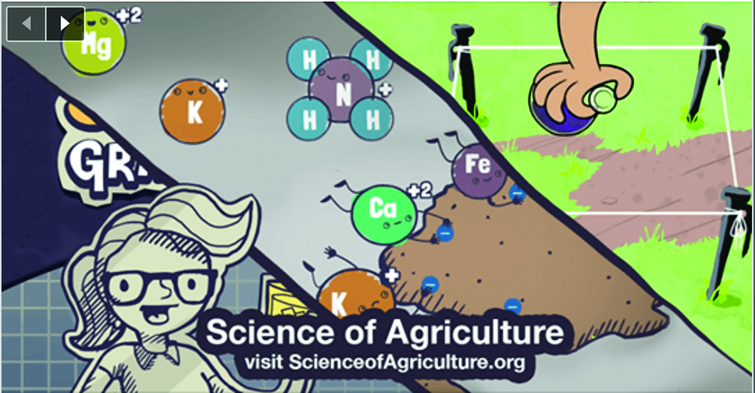
Students of all ages can grow crop plants in small pots inside a classroom, or outside, in small plots (such as a roof garden) and study growth as a function of time and growing conditions. Concepts of ‘abiotic’ (i.e. temperature, humidity, wind, sunlight, soil pH, ‘micro-nutrients’ and ‘macro-nutrients’) and ‘biotic’ (pests, pollinators, microbial symbionts) variables can be introduced to explain specific crop growth patterns and plants’ basic physiology. Through lectures about basic soil characteristics, the students can learn about pH levels, the physical properties of minerals, and about ecosystem services by soil microbial organisms. The importance of water could be another sub-topic – the basic functions of water in the growth of living organisms. Practical tasks associated with this discipline could be to design/ develop a crop production system and calculate: 1) the number of plants per area (how many seeds or transplants are needed based on row and plant spacing); 2) irrigation and fertiliser requirements; and 3) yield (both amount and value).
More advanced practical tasks could involve: 1) development of irrigation systems (potentially automated and programmed using raspberry pie computing); 2) use of sensors (i.e. soil moisture sensors and/or weather stations to monitor growing conditions and later describe/explain crop yields.
Agricultural plants (and animals) are direct results of selective breeding. Basic genetics could be explained through a series of classes on how humans produce cabbage, broccoli, cauliflower, kale, Brussels sprouts, etc. from wild mustard plants. Such classes could start with the observations from Darwin, Mendel and others, or they could introduce crop breeding programmes from ancient Mesopotamia. These subjects would be the building blocks for basic concepts in genetics and molecular biology. Fundamentals in cell biology could be observed through plant cells, enabling students to make important connections between cell organelles, plant physiology and crop development.
Each school could carefully examine its own potential for having solar panels to produce energy, install rainwater catchment systems and water recycling methods, and identify sources of organic material for composting (crop fertiliser) from within the school and/or nearby shops, factories, etc. Engineering, computer science and technology would be taught as projects that focus on how to quantify, develop quality control, and use energy, water and nutrients in on-school crop production. At a more advanced level, it would be possible to integrate robotics and machine learning systems into the curriculum. If food production is not feasible on the school premises, then students could develop virtual computer programmes and simulate real-food productions.
Each school could carefully examine its own potential for having solar panels to produce energy, install rainwater catchment systems and water recycling methods, and identify sources of organic material for composting (crop fertiliser) from within the school and/or nearby shops, factories, etc. Engineering, computer science and technology would be taught as projects that focus on how to quantify, develop quality control, and use energy, water and nutrients in on-school crop production. At a more advanced level, it would be possible to integrate robotics and machine learning systems into the curriculum. If food production is not feasible on the school premises, then students could develop virtual computer programmes and simulate real-food productions.
Cooking is nothing more and nothing less than applied chemistry. How does the pickling of vegetables work? What is happening when cream is whipped? What happens to food during heating and/or frying? Salting olives, fish and other types of meat has been practised for thousands of years – how does this means of preserving food actually work?
Imagine teaching students about chemical reactions and chemical bonds, pH levels and other basic chemistry concepts through a combination of theory and eating food! Students would surely walk away with a profound appreciation for food and hands-on cooking experience. Indeed, learning about organic chemistry, food preservation and cooking would also address nutrition and the importance of healthy eating.
Around 1845, the migration by people in northern Europe to North America was largely due to famine, which was caused by a devastating disease in potatoes. History and social sciences could be taught on the basis of the importance of food through time and among cultures.
What did the Mayas eat and why? How did trade routes and commerce (coffee, sugar, spices and silk) affect societies and civilisations? It would be incomplete to discuss the history of the southern US states and slavery without taking a careful look at the commercial role and industries derived from sugar and cotton plantations.
Food is mentioned in literature in myriad ways. It is a part of rituals and traditions that define our cultural values. In all societies and cultures, large banquets and feasts play roles in celebrating major events of celebration. They invoke a sense of victory and power; they enforce images of superiority, but they are also unifying and crucial in diplomacy and reconciliation. In paintings and poetry, symbolism based on food items is common. Just as one can study an individual genre of art, I would argue that, for instance, one can compare how Renaissance painters and Andy Warhol used food items in their paintings.
Concerns about food security are linked to the effects of climate change and to international crises. More specifically, climate change and water scarcity, and therefore food security, are factors underpinning conflicts in the Middle East and elsewhere. Thus, long-term solutions to these crises cannot be conceptualised unless they include considerations related to sustainable food production.
Another topic to address is urban farming and ‘edible cities’. It is the traditional notion that rural and urban developments are in direct conflict with one another, as the growth of cities take up farmland and water resources. But urban farming and edible cities are about the partial integration of the two, about creating urban environments with high degrees of recycling of resources (water and nutrients) and urban citizens producing some fraction of their food consumption.
Mathematics could be taught through models of crop and animal growth (as functions of nutrients, weather, pollination, pest pressures, etc.) and the economics of food trade. Imagine enabling students to access data from an on-site weather station (perhaps from one they have built and programmed themselves!) and assigning them the task of using temperature data to model and predict the growth and harvest time of vegetables in the school’s vegetable garden. Such a task could easily involve differential equations and lead to the creation of urban maps of yield potentials. Students would likely be far more inclined to embrace learning about differential equations as important/ meaningful, because it is being presented to them in a tangible and relevant context.
Moreover, individual schools, or a group of schools within an area, could have practical or theoretical contests, in which student groups compete to develop the most accurate model. Many schools already have robotics programmes, and there are competitions at multiple levels for students to showcase their skills. How about similar competitions for sustainable urban food production?
We all need food, and it is something all students can directly relate to. But what we eat has changed over time, and it varies among countries and cultures, meaning that not all students view food in the same way. Teachers can capitalise on such diversity in food experience among students in a classroom and use it as a conduit to bring students together. Music could be another denominator, and I am sure there are many others with equally broad relevance and potential. Food is highlighted because it relates so clearly to our growth and well-being; it is very easy to structure and execute teaching curricula around food, both practically and theoretically.
As an educational denominator, food can be used to indirectly address societal challenges, such as obesity, and it can also elevate levels of empowerment. That is, I think many young people suffer from stress induced by fears about the consequences of climate change and from a sense of being powerless and unable to make concrete contributions to a more sustainable future. Learning, both in practical and theoretical terms, about sustainable food production could be a strong catalyst of empowerment, and it may also provide the context that makes more students interested in basic sciences and entrepreneurship.
We all know the saying, “You are what you eat”. How about using what we eat, food, as the denominator in our school curricula?


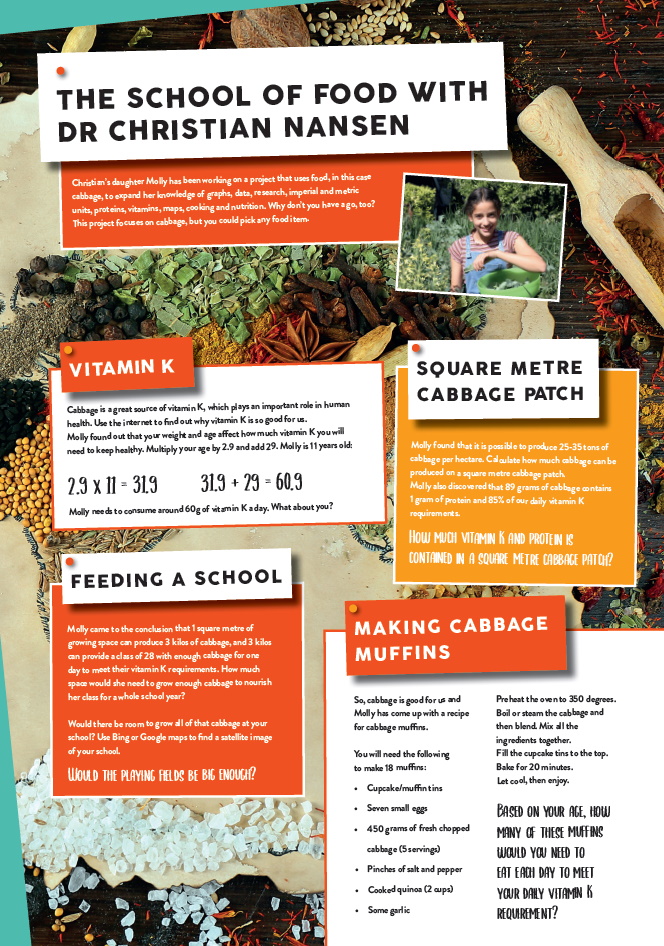
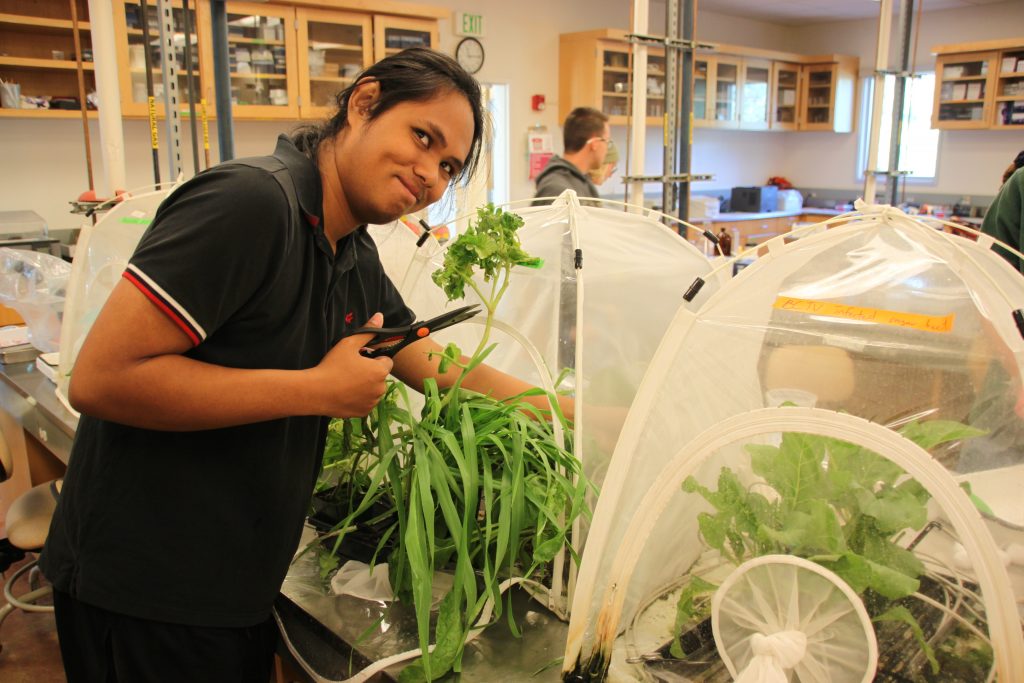
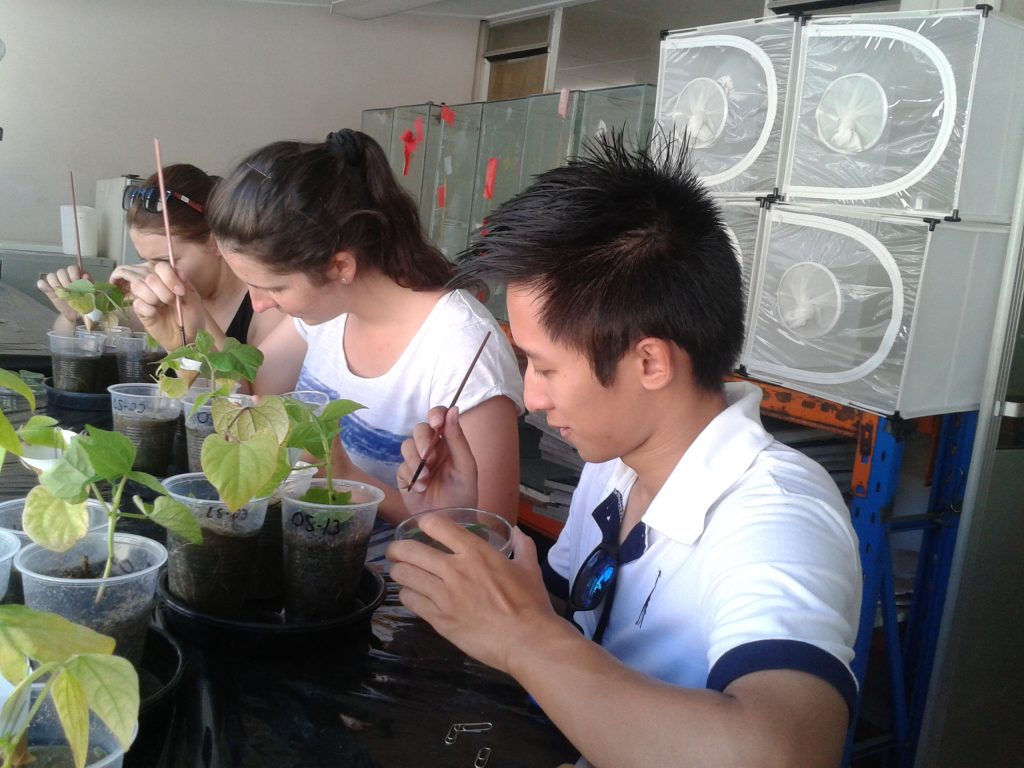
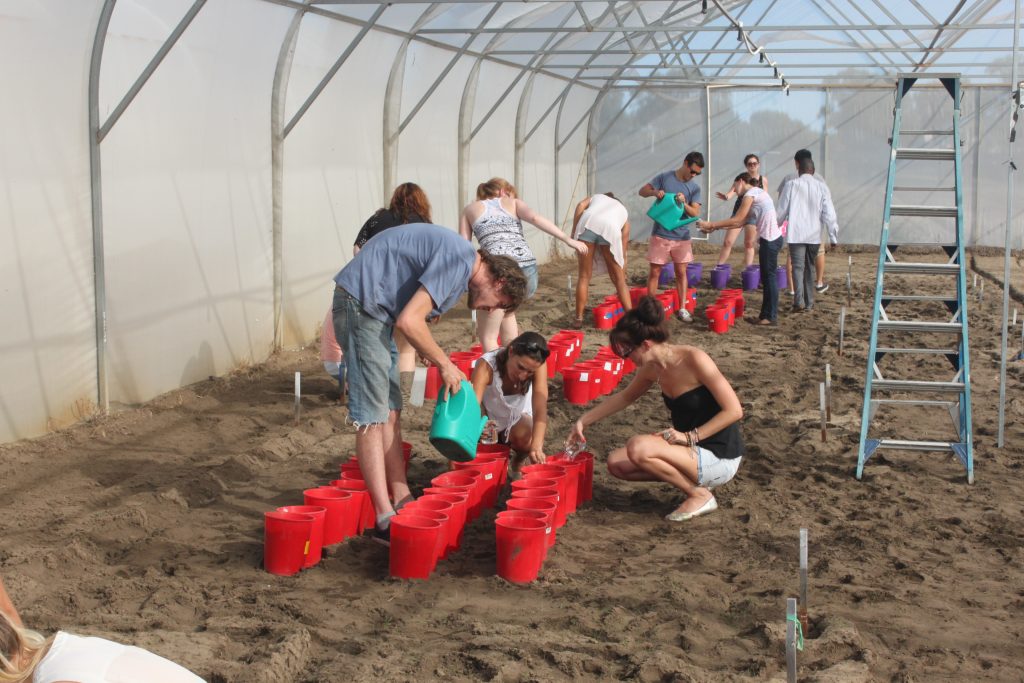
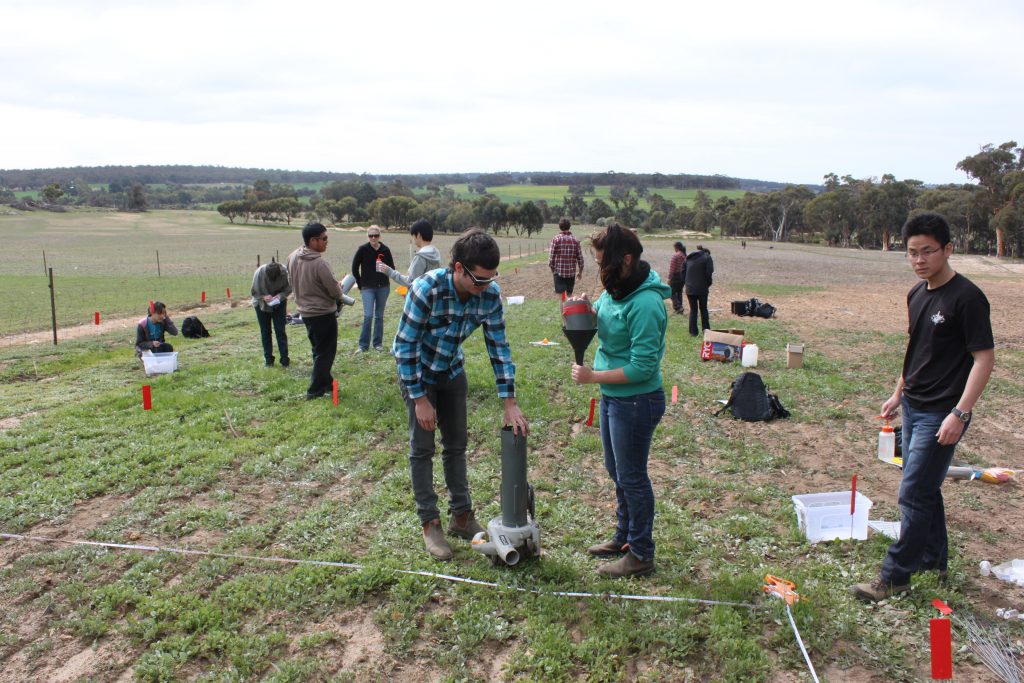

I totally believe in a k-12 agriculture curriculum just having issues with finding someone to write also a certified instructor can you help on time sensitive challenge . Thanks
Robert
510-908-4681
I haven’t submitted comment before.
Please contact me.
Hi Robert,
We have sent you an email about this. Please check your spam folder if you have not received it.
Best wishes,
Futurum
Spot on
In my primary 3, I was chairman of young farmers association
We supplied the whole trading Centre with cabbages, tomatoes, egg plants etc in the dry region of Karamoja in Uganda
We learnt so many things including accounting for the money received and preparing a handover report in very basic and simple formats